Melon is a thermophilic culture, so most often it is sown first on seedlings, and that is later transferred to the beds. If the seeds are planted immediately in the ground, the fruits may not have time to grow and ripen before the end of the season.
In the south, melon seeds are sown for seedlings from the end of March to mid—April, in the regions of the middle zone — at the end of April, in the north - in early May.
Shoots are planted in a vegetable garden when the daytime air temperature is kept within 20 ° C, and the night temperature does not fall below 6 ° C. You also need to wait until the threat of recurrent frosts has passed. In the southern regions, suitable conditions develop already at the end of April, in the middle zone — in late May — early June, in the north — in the first half of June.
Decide which melons you need and go to the garden centers for seeds or seedlings.
Melon fruits can be of different colors, sizes and shapes. But these characteristics are more a matter of taste. When choosing seeds, first of all, focus on the maturation period. Early—ripening melons can be harvested in about 55-70 days from the moment of emergence, medium—ripened - in 70-80 days, late - in 80-100 days. In the southern regions, you can safely grow any varieties of melons, and in the middle zone and in the north, it is better to choose early-ripening ones in order to guarantee sweet fruits .
Pay attention to the date of manufacture of seeds indicated on the package. They should be 2-4 years old. Younger material will not produce female flowers, from which fruits are tied. If there is an F1 marking next to the name of the melon, then you have a hybrid in front of you. They are more resistant to diseases, pests and the vagaries of the weather than pure varieties.
The optimal age of the finished seedlings for planting in the ground is 25-30 days. However, this parameter will not always be possible to find out from the seller. Therefore, focus on the appearance of plants — they should have at least three real leaves. Also make sure that there are no spots, pests, rotten or dry areas on the seedlings.
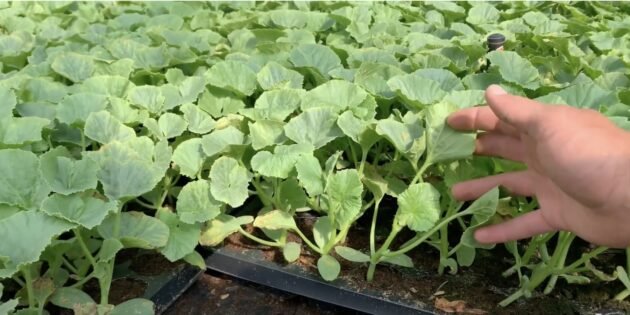
Melon does not tolerate picking , so you should not take common containers. Prepare separate cups or pots with a volume of at least 400 ml. Make sure that the bottom has several drainage holes for excess moisture to escape.
Fill the containers with universal soil for growing vegetable seedlings, not getting enough sleep to the top about 1 cm. Lightly tamp the ground with your fingers. Then make three holes about 1.5 cm deep at a distance of 2 cm between them. For convenience, you can use a pencil or a stick for sushi.
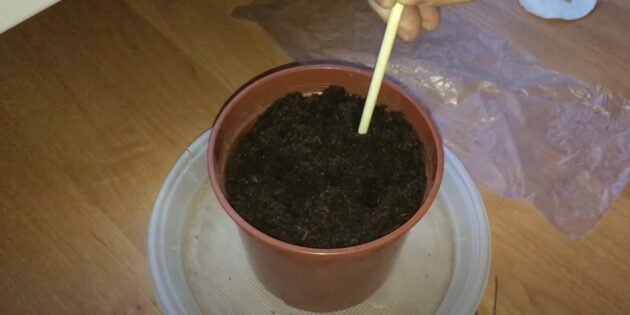
Put one seed in each hole. Sprinkle them with soil.
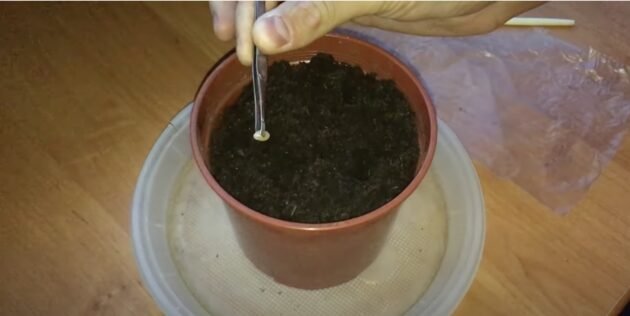
Slightly moisten the crops with water.
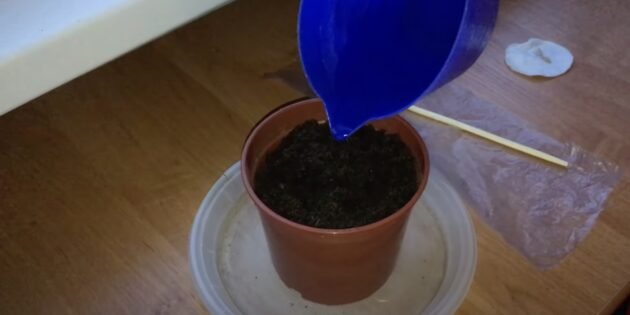
Cover the pot with a transparent film or bag. Make several holes on top to create air exchange in the improvised greenhouse.
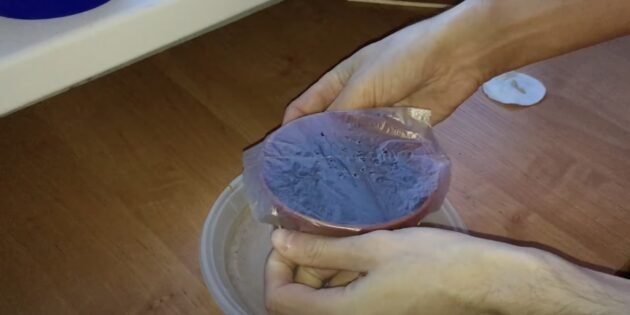
Put the container in a warm place with a temperature of 23-26 ° C. Lighting doesn't matter at this stage.
They will appear in about a week. As soon as you notice the sprouts, remove the shelter and move the pots to the sunniest windowsill. Either put the seedlings under a phytolamp or a conventional fluorescent lamp with a power of at least 36 watts per 1 m2. Turn on the device for 12 hours a day.
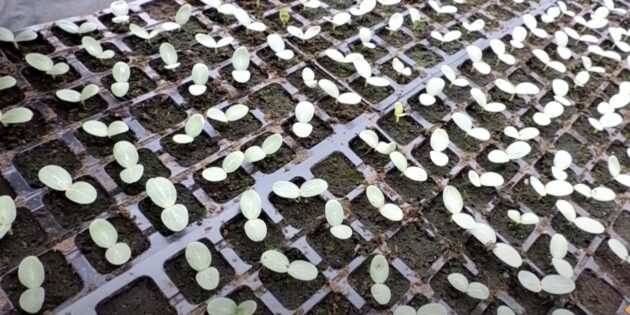
If all the seeds have sprung up in one pot at once, pull out the weaker stems, leaving the strongest one.
As mentioned above, from the emergence of seedlings to planting seedlings in the ground takes an average of 25-30 days. During this time, the melon manages to release three to five real leaves.
Home care of plants consists only in regular watering. Make sure that the soil in the pots is always moist, do not allow it to dry out. But fertilizing young seedlings will not be required.
Find the sunniest plot in your garden. 1-2 weeks before planting seedlings in the ground, add 4-5 kg of compost and 250 g of wood ash per 1 m2 of the bed. If the soil on the site is dense and heavy, you can additionally add 5 liters of sand per 1 m2. Then dig up the earth on the bayonet of a shovel and level its surface with a rake.
Dig holes, the depth and width of which will be 2 cm more than the volume of pots with seedlings. Provide a distance of at least 60 cm between the plants.
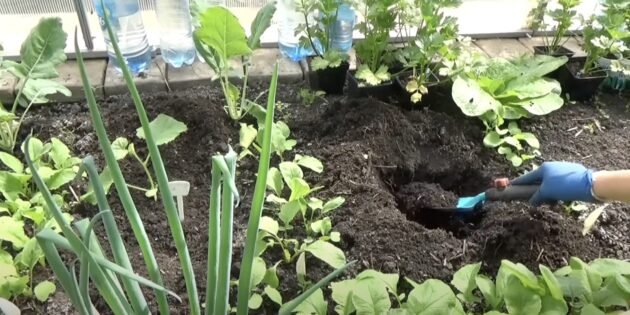
Pour plenty of warm water over the soil and wait until it is completely absorbed.
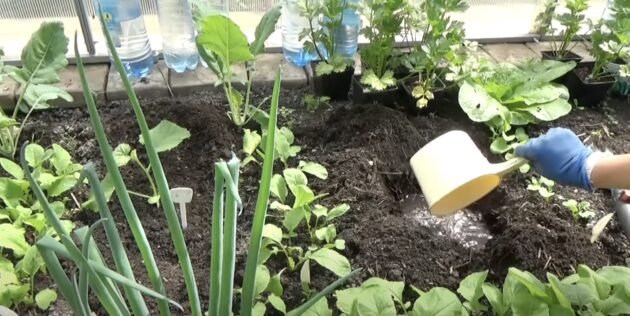
Carefully remove the plant from the cup, trying not to damage the roots. Lower the seedling into the hole.
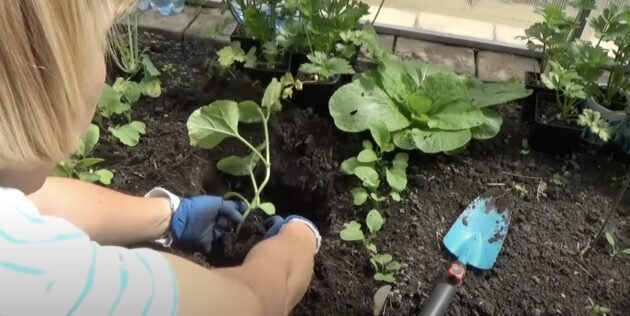
Fill all the voids around the stem with soil.
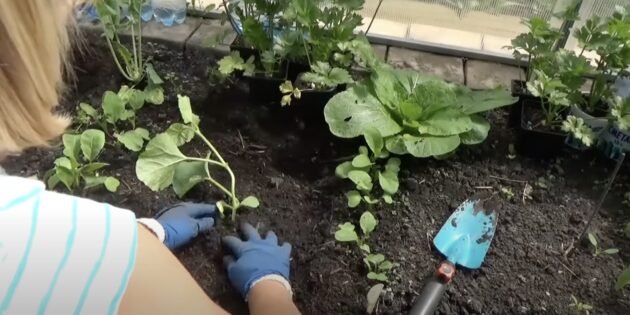
Pour the melon under the root with warm water. Each seedling will have enough 1 liter of liquid.
Proper watering, fertilizing and pinching will help to get sweet fruits.
Do this early in the morning or at sunset, when the soil on the bed dries to a depth of about 5 cm. On average, the procedure is performed once a week. Use only warm water and pour it strictly under the root, trying not to get on the leaves, stems and fruits. At first, one plant will take about 10 liters of water. When the ovaries appear, the norm can be gradually reduced to 3 liters. At the stage of fruit ripening, watering is completely stopped.
In total, the plant is fertilized three times. Each time, about 2 liters of nutrient mixture should be poured under the root of one melon.
When the melon grows strongly, begins to go beyond the space allotted to it and binds fruits about 5 cm in size, you need to shorten its stems. This will restrain the growth of the crop, due to which it will concentrate on pouring fruits.
In varietal melons, count three lateral lashes from the base of the bush, on which there are ovaries, and cut off the main stem with a sharp pruner. Leave no more than three fruits on each side shoot, count three or four leaves from the extreme one and remove the crown.
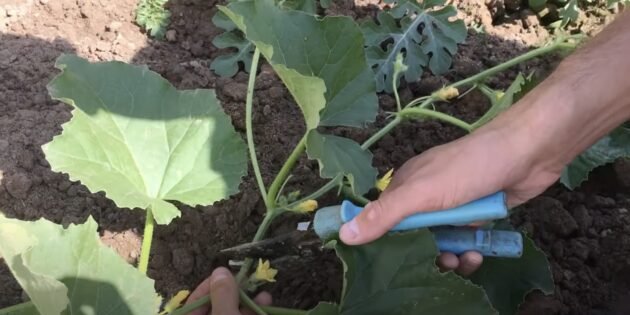
In hybrid melons, the main stem is not shortened, because it is on it that the ovaries are formed. All side shoots need to be cut off, leaving two or three leaves on them.